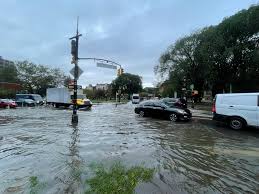The Recent New York Flood: Understanding Causes and Impacts

Introduction
The recent floods in New York have severely impacted communities and infrastructure, drawing attention to the urgent need for robust flood management strategies. With climate-related events becoming more frequent, understanding the causes and effects of such natural disasters is paramount for residents and officials alike.
Details of the Flooding
On September 29, 2023, heavy rainfall, exceeding 5 inches in some areas, led to significant flooding in parts of New York City and surrounding regions. The National Weather Service issued flash flood warnings as rising waters inundated streets, disrupted public transportation, and caused property damages estimated in the millions. Areas such as Brooklyn and Queens were particularly affected, with images of vehicles submerged and residents stranded in their homes quickly circulating on social media.
Causes of the Flood
Experts attribute this extreme weather event to a combination of climate change, urbanization, and outdated drainage systems. Climate change has intensified the frequency and severity of storms, while urbanization has reduced the land’s natural ability to absorb rainwater. As the city continues to grow, infrastructure improvements become essential to mitigate future flood risks effectively.
Response and Relief Efforts
The city’s Department of Environmental Protection swiftly responded to the emergency, deploying crews to assist in rescue operations and clear clogged drainage systems. Local government also set up temporary shelters for those displaced by the flood. FEMA (Federal Emergency Management Agency) announced that it would assess the damage and provide aid to individuals and businesses affected by this disaster.
Looking Forward
As New York City contemplates better stormwater management solutions, experts recommend investing in green infrastructure, such as permeable pavements and rain gardens, which could enhance the city’s resilience to future flooding. City officials are committed to reviewing and updating their emergency response strategies, but the focus will need to shift towards long-term adaption strategies to combat the evolving climate crisis.
Conclusion
This recent flooding event in New York serves as a stark reminder of the impacts of climate change on urban environments. It highlights the necessity for continuous investment in infrastructure and community preparedness programs. As New Yorkers recover from this event, the lessons learned could pave the way for a more resilient and sustainable approach to dealing with future flooding challenges.









